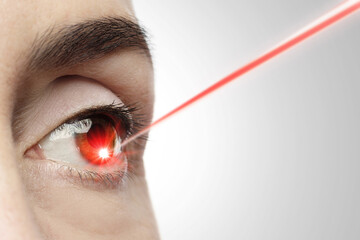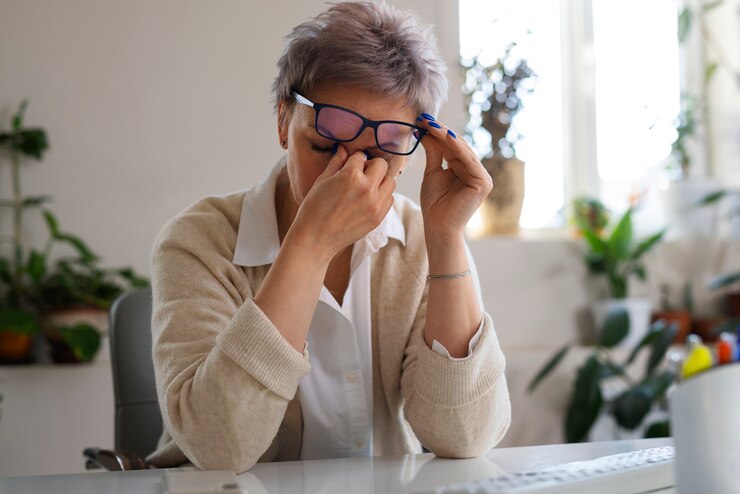Understanding Open Angle Glaucoma & Its Preventive Measures
April 25, 2024
Have Any Questions?
Please contact us, if you have any queries
Categories

Open Angle Glaucoma (OAG) is a common yet serious eye condition that can lead to irreversible vision loss if not detected and managed early. It’s known as the “sneak thief of sight” because it typically progresses without any early symptoms or pain, making awareness and understanding of the disease crucial for prevention and management. This blog aims to shed light on Open Angle Glaucoma, its risk factors, symptoms, and preventive measures, with a spotlight on the advanced care options available at Dr. Rani Menon Maxivision Eye Hospital in Thrissur.
What is Open Angle Glaucoma?
Open Angle Glaucoma is the most common form of glaucoma, characterized by the gradual clogging of the eye’s drainage canals, which leads to increased eye pressure (intraocular pressure or IOP). Over time, this pressure can cause damage to the optic nerve, the vital link between the eye and the brain, resulting in vision loss. The open-angle refers to the angle where the iris meets the cornea being as wide and open as it should be, but the eye’s drainage canals become blocked over time, leading to increased IOP.
Risk Factors
Understanding the risk factors for Open Angle Glaucoma is the first step in prevention. They include:
– Age: The risk increases significantly over the age of 40.
– Family History: Having a family history of glaucoma increases your risk.
– Race: People of African, Asian, and Hispanic descent are at higher risk.
– Medical Conditions: Diabetes, high blood pressure, and heart disease may increase the risk.
– Eye Conditions: High myopia (near-sightedness), thin corneas, and previous eye injuries can elevate risk.
Symptoms and Detection
In its early stages, Open Angle Glaucoma presents no noticeable symptoms. As the condition progresses, peripheral (side) vision gradually decreases and can lead to tunnel vision. Due to its silent progression, regular comprehensive eye exams are essential, especially for those at higher risk. These exams include measurements of IOP, inspections of the drainage angles, evaluations of the optic nerve, and visual field tests.
Preventive Measures
While Open Angle Glaucoma cannot be prevented in the traditional sense, its early detection and the management of risk factors can prevent or significantly slow down vision loss. Preventive strategies include:
– Regular Eye Examinations: Routine comprehensive eye exams can help detect glaucoma in its early stages before significant damage occurs.
– Management of Overall Health: Controlling systemic conditions such as diabetes and hypertension can reduce the risk.
– Eye Protection: Use protective eyewear to prevent injuries that could lead to glaucoma.
– Awareness and Education: Being informed about the risk factors and the importance of regular eye screening, especially if you’re at higher risk.
Treatment Options
Treatment for Open Angle Glaucoma aims to lower eye pressure, which can be achieved through medications, laser treatment, or surgery, depending on the severity of the condition. While these treatments can’t reverse vision loss, they can halt the progression of the disease if applied in time.
Advanced Care at Dr. Rani Menon Maxivision Eye Hospital in Thrissur
For those seeking comprehensive glaucoma care, Visit Dr. Rani Menon Maxivision Eye Hospital in Thrissur for better diagnostic and treatment options for Open Angle Glaucoma. With a dedicated team of glaucoma specialists, the hospital is equipped with the latest technology to provide personalized care plans tailored to each patient’s needs. From initial screening to advanced surgical interventions, patients can expect a holistic approach to managing their condition, aimed at preserving as much vision as possible.
The hospital’s commitment to patient education and preventive care underscores its reputation as a leading eye care provider. By emphasizing the importance of regular eye exams and raising awareness about the silent nature of Open Angle Glaucoma, Dr. Rani Menon Maxivision Eye Hospital plays a crucial role in the early detection and management of this condition, offering hope and improved outcomes for those affected.
In conclusion, while Open Angle Glaucoma poses a significant threat to vision, understanding the condition, recognizing the risk factors, and adhering to preventive measures can make a substantial difference. With advancements in eye care and the exemplary services provided by institutions like Dr. Rani Menon Maxivision Eye Hospital in Thrissur, managing Open Angle Glaucoma effectively is more achievable than ever, helping individuals maintain their vision and quality of life.














